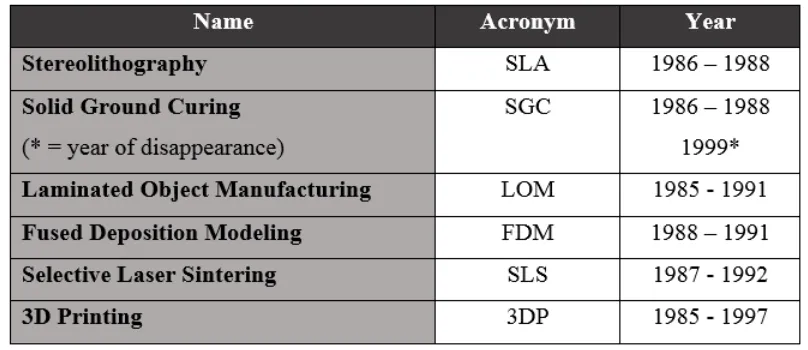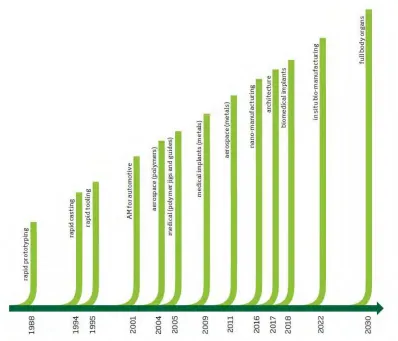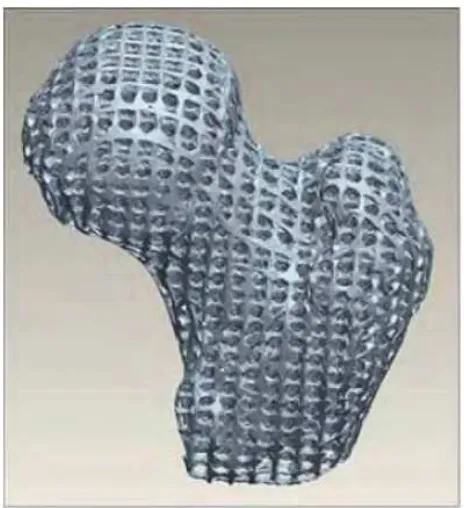UNIVERSITI TEKNIKAL MALAYSIA MELAKA
OPTIMIZATION OF FDM PARAMETERS WITH TAGUCHI
METHOD FOR PRODUCTION OF FLEXIBLE ABS PART
This report submitted in accordance with requirement of the Universiti Teknikal Malaysia Melaka (UTeM) for the Bachelor Degree of Manufacturing Engineering
(Manufacturing Design) with Honours.
by
HO KAM YUEN
B051210023
910216065499
UNIVERSITI TEKNIKAL MALAYSIA
BORANG PENGESAHAN STATUS LAPORAN PROJEK SARJANA MUDA
TAJUK: Optimization of FDM Parameters with Taguchi Method for Production of Flexible ABS Part
SESI PENGAJIAN: 2014/15 Semester 2
Saya HO KAM YUEN
mengaku membenarkan Laporan PSM ini disimpan di Perpustakaan Universiti Teknikal Malaysia Melaka (UTeM) dengan syarat-syarat kegunaan seperti berikut:
1. Laporan PSM adalah hak milik Universiti Teknikal Malaysia Melaka dan penulis. 2. Perpustakaan Universiti Teknikal Malaysia Melaka dibenarkan membuat salinan
untuk tujuan pengajian sahaja dengan izin penulis.
3. Perpustakaan dibenarkan membuat salinan laporan PSM ini sebagai bahan pertukaran antara institusi pengajian tinggi.
4. **Sila tandakan ( )
SULIT
TERHAD
TIDAK TERHAD
(Mengandungi maklumat yang berdarjah keselamatan atau kepentingan Malaysia sebagaimana yang termaktub dalam AKTA RAHSIA RASMI 1972)
(Mengandungi maklumat TERHAD yang telah ditentukan oleh organisasi/badan di mana penyelidikan dijalankan)
Alamat Tetap:
Blok B-00-28, Taman Putra Budiman,
43300 Seri Kembangan,
APPROVAL
This report is submitted to the Faculty of Manufacturing Engineering of UTeM as a partial fulfillment of the requirements for the degree of Bachelor of Manufacturing Engineering (Manufacturing Design) (Hons.). The member of the supervisory is as follow:
DECLARATION
I hereby, declared this report entitled “Optimization of FDM Parameters with Taguchi Method for Production of Flexible ABS Part” is the results of my own
research except as cited in the references.
Signature : ………
i
ABSTRAK
ii
ABSTRACT
iii
DEDICATION
I would like to dedicate this work to my
Beloved parents
Dearest siblings
Honorable supervisor and lecturers
iv
ACKNOWLEDGEMENT
I would like to use this opportunity to express my gratitude to everyone who supported me throughout the completion of the report for Final Year Project. I am thankful for their guidance, criticism and also advice during the project.
v
2.1 Additive Manufacturing (AM) 4
2.1.1 Advantages and Limitations of AM 6
vi
2.1.2.1 Medical Applications 9
2.1.2.2 Automotive Applications 10
2.1.2.3 Architectural Applications 11
2.2 Fused Deposition Modeling (FDM) 12
2.2.1 Working Principle of FDM 12
2.2.2 Parameters of FDM 16
2.2.3 Material of FDM 18
2.3 Experimental Methods and Tools 23
2.3.1 The Taguchi Method 23
2.3.1.1 Taguchi Design of Experiment Process 24
2.3.1.2 Orthogonal Array (OA) 26
2.3.1.3 Signal-to-Noise Ratio (S/N Ratio) 28
2.3.1.4 Analysis of Variance (ANOVA) 28
2.3.2 Applications of Taguchi Methods 30
CHAPTER 3: METHODOLOGY 32
3.1 Project Planning 32
3.1.1 Background Study 33
3.1.2 Preparation of the Sample 34
3.1.3 Preparing and Running of Experiment 36
3.1.4 Preparation of Report 37
vii
CHAPTER 4: RESULTS AND DISCUSSIONS 40
4.1 Preparation of Samples 40
4.1.1 CAD Model Generation 41
4.1.2 Tabulation of FDM Parameters 41
4.1.3 Fabrication of Samples 43
4.2 Preparation and Running of Experiment 45
4.2.1 Preparation of Experiment 46
4.2.2 Running Experiment 47
4.2.3 Result Obtaining and Data Tabulation 48
4.3 Discussions 51
CHAPTER 5: CONCLUSION AND RECOMMENDATIONS 52
5.1 Conclusion 52
5.2 Recommendations 54
viii
LIST OF TABLES
2.1 AM technologies, Acronym and development years 5
2.2 AM application timeline 7
2.3 Compilation of FDM material description 19
2.4 Compilation of some material and its properties for FDM 22
3.1 Gantt chart for Final Year Project 1 38
3.2 Gantt chart for Final Year Project 2 39
4.1 FDM parameters and its levels 42
4.2 The orthogonal array L9 (33) derived using Taguchi Method 43
4.3 Fabrication time and material required for each sample 46
4.4 Object travel distance for 10º of displacement angle 49
4.5 Object travel distance for 15º of displacement angle 49
4.6 Object travel distance for 20º of displacement angle 50
ix
LIST OF FIGURES
2.1 Categories of RP technologies 5
2.2 AM application timeline 8
2.3 Example of a scaffold model 9
2.4 CAD model of scorpio rotor, a critical component for automobile 10
2.5 The example of full scale builds of construction model 11
2.6 8 generic steps of AM process 12
2.7 Process principle of FDM 15
2.8 Layout of machine component 15
2.9 FDM produced part with component material and supporting material 16
2.10 Build orientation 17
2.11 Building parameters of FDM machine 17
2.12 Raster full with Raster Direction at 90° to one and another 18
2.13 Taguchi design procedure 25
2.14 The table of array selector 26
2.15 Notation of an orthogonal array 26
2.16 Example of a L50 ( 512 ) 27
3.1 Overall project flow 33
3.2 The process for sample preparation 34
x
3.4 A design of Catapult model 35
3.5 The process of running the experiment and data collection 37
4.1 Sample design using SolidWorks 41
4.2 Infill pattern from left to right representing Line, Rectangle and Hexagon 42
4.3 The infill density from left to right representing 20%, 40% and 60% 43
4.4 The FDM machine that used to fabricate the sample, FlashForge Dreamer 44
4.5 The samples fabricated using the FlashForge Dreamer 44
4.6 Setup of jigs and fixture for the experiment 46
4.7 Side view of the equipment setup (Left) and the displacement angle of 10º limits
using metal plate (Right) 47
xi
LIST OF EQUATIONS
2.1 Smaller-is-better equation 28
2.2 Nominal-is-better equation 28
1
CHAPTER 1
INTRODUCTION
This chapter introduces the project and briefly describe the aims, objectives and also the scopes. This chapter will also give an overview on the implementation of the project.
1.1 Introduction
Ever since the first commercial rapid prototype (RP) machine in 1986 which known as Stereolithography, RP machines have been commercialized widely with many more advance system developed in all around the world. Rapid prototyping which also known as additive manufacturing (AM) is clearly a key technology in shortens the time of product development for faster built of physical prototypes, tooling and models. Generally AM is more flexible and fast in adapting the rapid changes of the product design compared to conventional method such as casting, moulding and machining.
2 producing good parts are the layer thickness, air gaps and raster angle. The parameters are studied and optimized or well paired in order to ensure good quality of the output. In recent years, Taguchi’s techniques have been widely used in the optimization for both process design and product design, based on comprehensive experimental investigation. It is a suitable method is determining and optimizing the parameters of the FDM machine by pairing and testing the parameters (variables) which gives optimum output.
1.2 Problem Statement
It is important to determine the right parameters of the FDM machine in order to produce a part which can fulfil the desire specifications. There are basically few parameters which are important and will influence the specifications of the produced part, and these parameters are the layer thickness, air gaps and also the raster angle. The combinations of different setting of the parameters will definitely produce parts with different specifications, thus the study of the suitable combination of parameters is necessary for optimum output produced.
1.3 Aims
3
1.4 Objectives
The objectives of the project are:
i. To study and understand the parameter of FDM influencing the performance of the flexible ABS part,
ii. To use Taguchi method approach for design of experiment improving the FDM parameters,
iii. To determine optimum FDM process parameters combination which results in longest throwing distance with the ABS part.
1.5 Scope
4
CHAPTER 2
LITERATURE REVIEW
This chapter discuss about the related knowledge of the project which cover the introduction of the additive manufacturing, fused deposition modeling and Taguchi method.
2.1 Additive Manufacturing (AM)
Additive manufacturing, often been referred as 3D printing is a technology or process that convert digital model into parts and components. This technology firstly introduced as rapid prototype (RP) machine since the 1980s which is the Stereolithography (Lee, Abdullah & Khan, 2005).
5 Figure 2.1: Categories of RP technologies (Yagnik,D., 2014)
Ever since the Stereolithography is introduced, the idea has been studied and many new processes are invented, patented and commercialized, which some has been fall out and disappeared (Levy, Schindel, & Kruth, 2003). Table 2.1 shows the overview of the development of the rapid prototype process and defined as additive manufacturing later.
Table 2.1: AM technologies, Acronym and development years (Levy, Schindel, & Kruth, 2003)
6
2.1.1 Advantages and Limitations of AM
AM gives definite competitive advantages in the aspect of geometrical freedom and material flexibility (Levy, Schindel, & Kruth, 2003). AM techniques provides advantages (Jauhar, S. K., & Asthankar, K. M., 2012) in:
i. Automated fabrication process
ii. Fabrication of intricate and small parts iii. Reduced in fabrication lead time iv. No tooling involvement
v. Elimination of process planning vi. Product customization
vii. No scrap/waste
AM provides advantages in material saving because it considered as a “clean” build process as it requires only the exact amount of material for the design itself. Other than that, AM has shorter production lead time compared to the conventional processes. The building time for a conventional machine is mostly depending to the complexity of the part design itself, the build time is directly proportional to the amount of features consist on that design, the more feature it have, the longer the built steps and result in longer built time. While AM gives a distinct advantages at this aspect as the build process of a part with AM machine will be one, which is layering the material regardless the features of the part. Apart of that, AM requires no tooling for the part production process and this lead to a cost reduction in the aspect of tooling and also manpower due to the automated process of AM.
7 characteristics of the part made by traditional manufacturing process using same material. Besides, with the introduction of AM, the product design process has been shifted in a different approach to design for layer manufacturing. The CAD software/systems will be a limitations to design the model in order to have full advantages provided by AM technologies since the current CAD software is developed based on the traditional manufacturing processes. Accuracy of the part always a concern in AM technology. The part produced using AM will have layered and rather rough surface finishing which requires the assistance of post-production of finishing processes. Productivity would be an issue for AM when comparing with the conventional processes. AM processes might have rather low productivity compared to traditional processes but in consideration of other factors such as the overall lead time, product complexity and more, AM would have provide a better alternative, yet the production rate of the AM techniques still a limitation that need to be addressed (Levy, Schindel, & Kruth, 2003).
2.1.2 Applications of AM
AM grew rapidly and its applications has expanded from prototyping to possible end-use parts/products. There are some history of AM applications and its estimated future developments.
Table 2.2: AM application timeline
8 Figure 2.2: AM application timeline
9 AM developed from producing prototypes to building end-use product and bring significant changes to sectors like medical, aerospace/automotive and recently the architecture sector.
2.1.2.1Medical Applications
With the unique characteristics of AM which is the great geometrical freedom promotes the expansion of its application to medical field due to the body structure varies among patients. (Su et al, 2012) The application of AM in medical field helps in fabricating parts for implant surgery such as scaffold.
Figure 2.3: Example of a scaffold model (Su et al, 2012)



